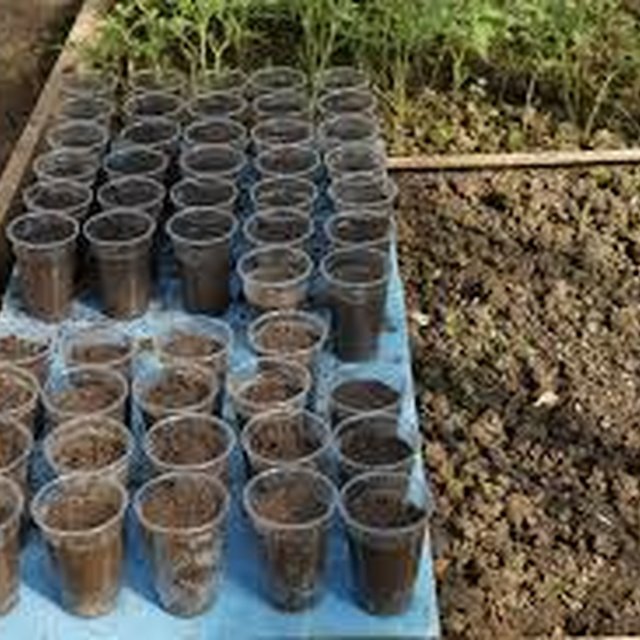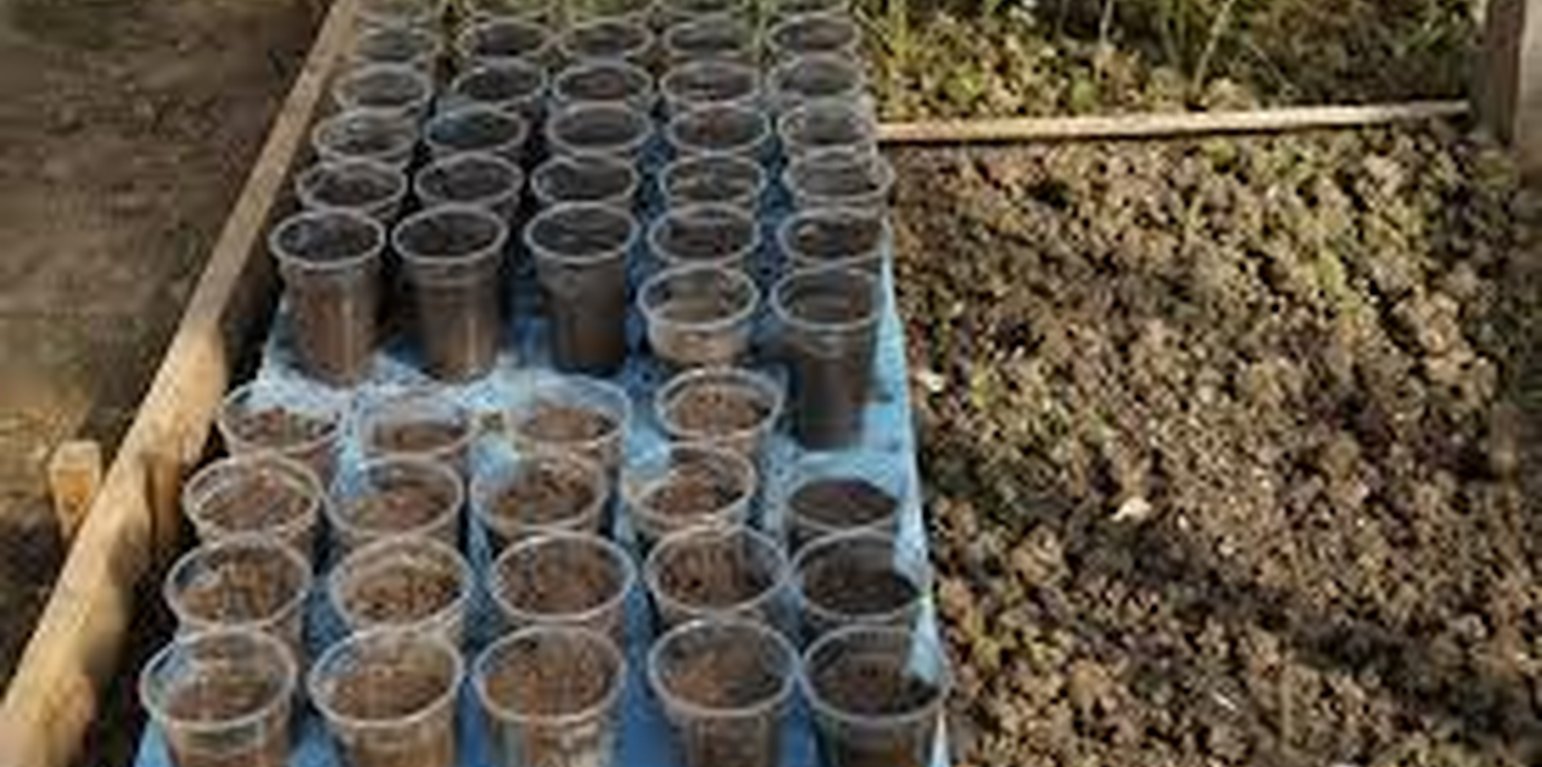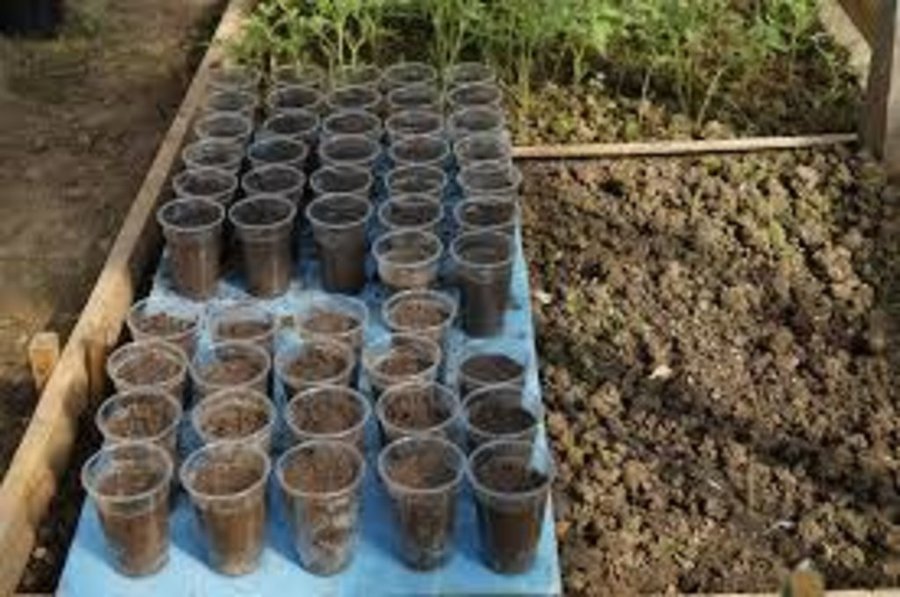Improvement of fertilizer using sipaulin plastic
(Nepal)
Composting
Descripción
This SLM is a method of producing quality fertilizer from composted animal manure,decaying leaves and plastics.
Aims / objectives: 1 Produce high quality fertilizer(rich in nutrient)
2 Reduce costs and labour,space and maintainane costs.
3 It provides few odour and attracts few pests.
Methods: Firstly,a pit is dug then the organic waste(animal waste , fodder, etc.....)is kept in it.The pit is covered with sipaulin plastic and the waste is left for 2 to 3 months.Due to the properties (Resistance to water , UV stabilisation ,heat seal,flesibility etc) the waste absorbs moisture and allow air to circulate ,Heat is uniformely distributed and then produces a high quality fertilizer.
Stages of implementation: Department of agriculture first distributed siipaulin plastic to a local technician and provide training and knowledge about methods,and Gradually other people of village are also taught its methods,this SLM method is appalied by near by village.
Other important information: Properties of sipaulin plastic are;
---UV stabilization
---Uiform temperature maintainance
---it is very strong.
Lugar
![]()
Lugar: Batase Sharada, Nepal, Nepal
Georreferencia de sitios seleccionados
Dato de inicio: 2011
Año de conclusión: n.d.
Tipo de Enfoque
-
tradicional/ local
-
iniciativa local reciente/ innovadora
-
proyecto/ basado en un programa

-
Metas del Enfoque y entorno facilitador
Propósitos/ objetivos principales del Enfoque
The Approach focused mainly on other activities than SLM (Quality fretilizer production)
--To provide high quality manure without the loss of nutrients.
--Reduce the use of other very harmful fertilizer and pesticides.
The SLM Approach addressed the following problems: --Low Agricultural production
--Lack of Technical knowledge
--Lack of cash
Condiciones que facilitan la implementación de la/s Tecnología/s aplicadas bajo el Enfoque
Condiciones que impiden la implementación de la/s Tecnología/s aplicadas bajo el Enfoque
-
Marco de trabajo legal (tenencia de tierra, derechos de uso de tierra y agua): The existing land ownership, land use rights / water rights hindered a little the approach implementation Community ownership meant no help in development.
-
Otros: People were first found learned to use artificial fertilizer due to ignorance.
Treatment through the SLM Approach: People were accordingly made aware about the advantages regarding this SLM.
Participación y roles de las partes interesadas involucradas
Partes interesadas involucradas en el Enfoque y sus roles
| ¿Qué partes interesadas/ entidades implementadoras estuvieron involucradas en el Enfoque? |
Especifique las partes interesadas |
Describa los roles de las partes interesadas |
| usuarios locales de tierras/ comunidades locales |
Famers of sharada batase |
All types of farmers(who grows for subsisdence as well as improve ecoinomy) |
| organizaciones comunitarias |
famers of sharada batase |
|
| especialistas MST/consejeros agrícolas |
Farmers(especially the monoculture) |
|
| gobierno local |
Sharada batase VDC |
|
| gobierno nacional (planificadores, autoridades) |
Department of agriculture |
|
Involucramiento de los usuarios locales de tierras/ comunidades locales en las distintas fases del Enfoque
ninguno
pasivo
apoyo externo
interactivo
auto-movilización
iniciación/ motivación
Ishwor thapa(a local technician)first launched the idea over village.
planificación
Department of Agriculture is planning this.
implementación
People who are involved in farming (specially monoculture) and the people who wish for a better production at lower cost.
monitoreo y evaluación
Monitaring is passive since the SLM is recently being avainable in the village.
Research
Since the process is applied by the people at individual level,people are only concerned about productivity.
La toma de decisiones en la selección de Tecnología MST
Las decisiones fueron tomadas por
-
solamente usuarios de tierras (autoiniciativa)
-
principalmente usuarios de tierras con el apoyo de especialistas MST
-
todos los actores relevantes, como parte de un enfoque participativo
-
principalmente por especialistas MST en consulta con usuarios de tierras
-
solo por especialistas MST
-
por políticos/ líderes
La toma de decisiones se basa en
-
la evaluación de conocimiento MST bien documentado (la toma de decisiones se basa en evidencia)
-
hallazgos de investigaciones
-
la experiencia personal y opiniones (no documentadas)
Apoyo técnico, fortalecimiento institucional y gestión del conocimiento
Las siguientes actividades o servicios fueron parte del enfoque
-
Construcción de capacidades / capacitación
-
Servicio de asesoría
-
Fortalecimiento institucional (desarrollo institucional)
-
Monitoreo y evaluación
-
Investigación
Construcción de capacidades/ capacitación
Se proporcionó capacitación a las siguientes partes interesadas
-
usuarios de tierras
-
personal de campo/ consejeros
Forma de capacitación
-
en el contexto de trabajo
-
de agricultor a agricultor
-
áreas de demostración
-
reuniones públicas
-
cursos
Temas avanzados
Ishwor thapa one of the local farmer as well as technician was given the training and was given the knowledge and use of SLM.
Servicio de asesoría
Se proporcionó servicio de asesoría
-
en los campos de los usuarios de tierras
-
en centros permanentes
Advisory service is quite adequate to ensure the continuation of land conservation activities; Since the result are quite satisfactory the advisory service is quite adequaet.
Fortalecimiento institucional
Se fortalecieron/ establecieron instituciones
-
no
-
sí, un poco
-
sí, moderadamente
-
sí, mucho
Describa la institución, los roles y las responsabilidades, miembros, etc.
Tipo de apoyo
-
financiero
-
construcción de capacidades/ entrenamiento
-
equipo
Detalles adicionales
Monitoreo y evaluación
bio-physical aspects were regular monitored by land users through observations
technical aspects were regular monitored by government, land users through observations
socio-cultural aspects were regular monitored by government through observations
economic / production aspects were regular monitored by land users through observations
area treated aspects were regular monitored by land users through measurements
no. of land users involved aspects were monitored by government through measurements
management of Approach aspects were monitored by None through observations
There were few changes in the Approach as a result of monitoring and evaluation: Regular monitoring help in the result evaluation.
There were no changes in the Technology as a result of monitoring and evaluation
Investigación
La investigación trató los siguientes temas
-
sociología
-
economía/ marketing
-
ecología
-
tecnología
-
Productivity and quqlity of product was measured.
This research was done by Agricultural specialist od department of agriculture.
Research was carried out both on station and on-farm
Financiamiento y apoyo material externo
Presupuesto anual en dólares americanos para el componente MST
-
< 2,000
-
2,000-10,000
-
10,000-100,000
-
100,000-1,000,000
-
> 1,000,000
Precise annual budget: n.d.
Approach costs were met by the following donors: government (Department of agriculture ): 50.0%; local community / land user(s) (Farmers): 50.0%
Los siguientes servicios o incentivos fueron proporcionados a los usuarios de las tierras
-
Apoyo financiero/material proporcionado a los usuarios de tierras
-
Subsidios para insumos específicos
-
Crédito
-
Otros incentivos o instrumentos
Apoyo financiero/material proporcionado a los usuarios de tierras
Government aid
parcialmente financiado
totalmente financiado
El trabajo de los usuarios de las tierras fue
-
voluntario?
-
comida por trabajo?
-
pagado en efectivo?
-
recompensado con otro tipo de apoyo material?
Análisis de impacto y comentarios de conclusión
Impactos del Enfoque
No
Sí, un poco
Sí, moderadamente
Sí, mucho
¿El Enfoque ayudó a los usuarios de tierras a implementar y mantener Tecnologías MST?
The soil in which organic manure is used is free of mass wasting.
¿El Enfoque empoderó a grupos en desventaja social y económica?
Increase in agricultural production.
¿El Enfoque mejoró cuestiones de tenencia de tierra/ derechos de usuarios que obstaculizaron la implementación de la Tecnologías MST?
There was no hinderance.
Did other land users / projects adopt the Approach?
All the farmers in sharada batase.
Motivación principal del usuario de la tierra para implementar MST
-
producción incrementada
-
incremento de la renta(bilidad), proporción mejorada de costo-beneficio
-
reducción de la degradación de la tierra
-
reducción del riesgo de desastres naturales
-
carga de trabajo reducida
-
pagos/ subsidios
-
reglas y reglamentos (multas)/ aplicación
-
prestigio, presión social/ cohesión social
-
afiliación al movimiento/ proyecto/ grupo/ redes
-
conciencia medioambiental
-
costumbres y creencias, moral
-
conocimiento y capacidades mejorados de MST
-
mejoramiento estético
-
mitigación de conflicto
Sostenibilidad de las actividades del Enfoque
¿Pueden los usuarios de tierras sostener lo que se implementó mediante el Enfoque (sin apoyo externo)?
Since the technology can be easily adopted after a training it is simple and easy to continue the approach activity without any support.
Conclusiones y lecciones aprendidas
Fortalezas: perspectiva del usuario de tierras
-
--The land users have taken this as a boon for orange farming.
--It have reduced the use of artificial fertilizer.
--The orange production and quality was found improved.
--Not only animal wastes but also the fodders and kitchen wastes has been utilized.
--socio-ecnomic development.
Fortalezas: punto de vista del compilador o de otra persona recurso clave
-
- It can help farmers t manage animal waste nto quality fertilizer.
- It is cheap and also easily affordable.
- Monoculture farmers can easily access this method.
- Dont need any vast and complex knowledge for implementation.
- inprove economy by increasing production. (How to sustain/ enhance this strength: - It can be enhanced by making aware about the use of organic fertilizer and reduce the use of harmful fertilizer.
- Government should research on such SLM with continuous monitoring.)
Debilidades/ desventajas/ riesgos: perspectiva del usuario de tierrascómo sobreponerse
Debilidades/ desventajas/ riesgos: punto de vista del compilador o de otra persona recurso clavecómo sobreponerse
-
-- People may take it time consuming.
-- They are more interested inartificial pesticides.
--people must get aware of impacts of harmful pesticides,
Referencias
Fecha de la implementación: 17 de enero de 2014
Últimas actualización: 8 de julio de 2017
Personas de referencia
-
Sabita Aryal (sabita@ku.edu.np) - Especialista MST
-
Ishwor Thapa - Especialista MST
Descripción completa en la base de datos de WOCAT
La documentación fue facilitada por
Institución
- Kathmandu University (KU) - Nepal
- Sarada Batase Village Development Committee (Sarada Batase VDC) - Nepal
Proyecto





